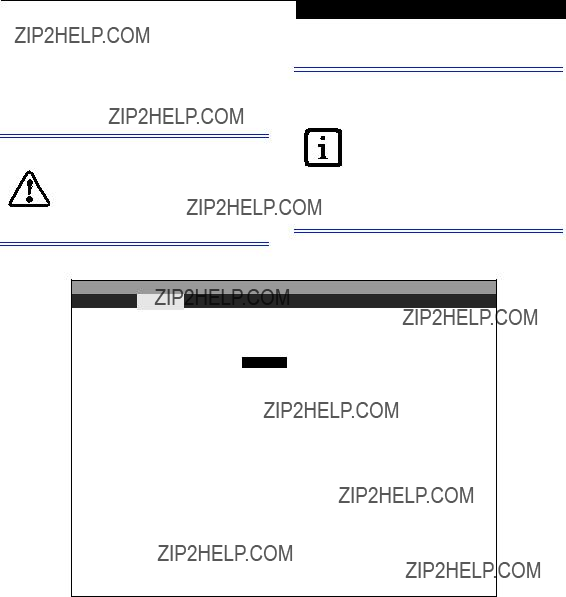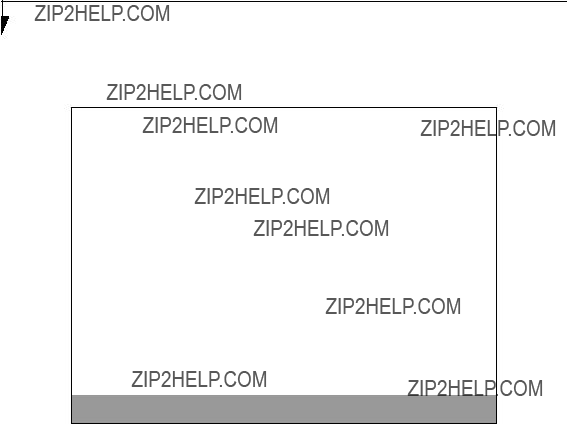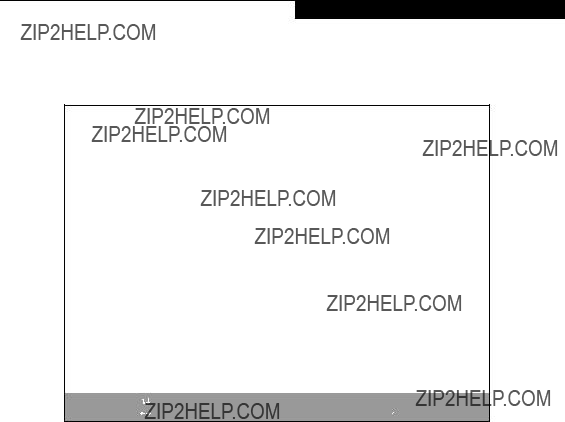
Fujitsu LifeBook
C Series
BIOS Guide
LifeBook C Series Model:
C1320D
Document Date: 09/06/2005
Document Part Number:
F U J I T S U C O M P U T E R S Y S T E M S

Fujitsu LifeBook
C Series
BIOS Guide
LifeBook C Series Model:
C1320D
Document Date: 09/06/2005
Document Part Number:
F U J I T S U C O M P U T E R S Y S T E M S

L i f e B o o k C S e r i e s N o t e b o o k B I O S
C Series BIOS
BIOS SETUP UTILITY
The BIOS Setup Utility is a program that sets up the operating environment for your notebook. Your BIOS is set at the factory for normal operating conditions, therefore there is no need to set or change the BIOS envi- ronment to operate your notebook.
The BIOS Setup Utility configures:
???Device control feature parameters, such as changing I/O addresses and boot devices.
???System Data Security feature parameters, such as passwords.
Entering the BIOS Setup Utility
To enter the BIOS Setup Utility do the following:
1.Turn on or restart your notebook.
2.Press the [F2] key once the Fujitsu logo appears on the screen. This will open the main menu of the BIOS Setup Utility with the current settings displayed.
3.Press the right and left arrow keys to scroll through the other setup menus to review or alter the current settings.
Navigating through the Setup Utility
The BIOS setup utility consists of six menus: Main, Advanced, Security, Boot, Info, and Exit. This document explains each menu in turn, including all submenus and setup items.
The following procedures allow you to navigate the setup utility menus:
1.To select a menu, use the cursor keys: [ ], [
], [  ].
].
2.To select a field within a menu or a submenu, use the cursor keys: [  ], [
], [  ].
].
3.To select the different values for each field, press the [Spacebar] or [+] to change to the next higher selec- tion and [F5] or
4.To activate a submenu press [Enter].
5.To return to a menu from a submenu, press [Esc].
6.To go to the Exit menu from any other menu, press [Esc].
7.Pressing the [F9] key resets all items in the BIOS to the default values.
8.Pressing the [F10] key saves the current configura- tion and exits the BIOS Setup Utility. You will be asked to verify this selection before it is executed.
9.Pressing the [F1] key gives you a general help screen.
Entering the Setup Utility after a configuration change or system failure
If there has been a change in the system configuration that does not match the parameter settings stored in your BIOS memory, or there is a failure in the system, the system beeps and/or displays an error message after the Power On Self Test (POST). If the failure is not too severe, you will have an opportunity to modify the settings of the utility, as described in the following steps:
1.When you turn on or restart the computer there is a beep and/or the following message appears:
Error message - please run SETUP program Press <F1> key to continue, <F2> to run SETUP
2.If an error message is displayed on the screen, and you want to continue with the boot process and start the operating system anyway, press the [F1] key.
???If your notebook emits a series of beeps that sounds like a code and the display is blank, please refer to the Trouble- shooting Section of your system User???s Guide. The Troubleshooting Section includes a list of error messages and their meanings.
???If your data security settings require it, you may be asked for a password before the operating system will be loaded.
2

C S e r i e s B I O S
3.If an error message is displayed on the screen, and you want to enter the setup utility, press the [F2] key.
4.When the setup utility starts with a fault present, the system displays the following message:
Warning! Error message [Continue]
5.Press any key to enter the setup utility. The system will then display the Main Menu with current parameters values.
3

L i f e B o o k C S e r i e s N o t e b o o k B I O S
MAIN MENU ??? SETTING STANDARD SYSTEM PARAMETERS
The Main Menu allows you to set or view the current system parameters. Follow the instructions for Navigating Through The Setup Utility to make any changes.
The following tables show the names of the menu fields for the Main menu and its submenus, all of the options for each field, the default settings and a description of the field???s function and any special information needed to help understand the field???s use.
*Note that actual drive labels shown may vary.
System Time and System Date can also be set from your operating system without using the setup utility. Use the Date and Time icon on your Windows Control panel or
Figure 1. Main Menu
Table 1: Fields, Options and Defaults for the Main Menu
Note that the parameters listed below may differ, as determined by your system configuration.
4

M a i n M e n u
Table 1: Fields, Options and Defaults for the Main Menu
Note that the parameters listed below may differ, as determined by your system configuration.
5

L i f e B o o k C S e r i e s N o t e b o o k B I O S
Serial ATA Port 0 Submenu of the Main Menu
The Serial ATA Port 0 submenu identifies what Serial ATA/IDE devices are installed.
Note that actual hard drive label shown may vary. Depending on the drive type, information such as cylin- ders, heads and sectors may also be displayed.
6

M a i n M e n u
Primary Master Submenu of the Main Menu
The Primary Master submenu identifies what primary devices are installed.
Note that actual hard drive label shown may vary. Depending on the drive type, information such as cylin- ders, heads and sectors may also be displayed.
7

L i f e B o o k C S e r i e s N o t e b o o k B I O S
Exiting from Main Menu
When you have finished setting the parameters on this menu, you can either exit from the setup utility, or move to another menu. If you wish to exit from the setup utility, press the [Esc] key or use the cursor keys to go to the Exit menu or to move to another menu.
8

A d v a n c e d M e n u
ADVANCED MENU ??? SETTING DEVICE FEATURE CONTROLS
The Advanced Menu allows you to:
???Set the I/O addresses for the ports.
???Set the communication mode for the parallel and infrared ports.
???Set the features of the keyboard/mouse.
???Select between the display panel and an external CRT display.
???Configure IDE devices in your system.
???Configure CPU features.
???Configure USB features.
???Configure the power button.
???View DMI Event Logging
Follow the instructions for Navigating Through the Setup Utility to make any changes.
See Navigating through the Setup Utility for more infor- mation.
The following tables show the names of the menu fields for the Advanced Menu and its submenus, all of the options for each field, the default settings and a descrip- tion of the field???s function and any special information needed to help understand the field???s use.
Note that not all fields appear in all configurations; the fields that appear are dependent upon the system CPU.
PhoenixBIOS Setup Utility
??? ??? ??? ??? ??? ??? ??? ???
Serial/Parallel Port Configurations
Keyboard/Mouse Features
Video Features
Internal Device Configurations
CPU Features
USB Features
Miscellaneous Configurations
Event Logging
Item Specific Help
Configures serial ports and parallel ports.
Figure 4. Advanced Menu
F9 Setup Defaults
F10 Save and Exit
9

L i f e B o o k C S e r i e s N o t e b o o k B I O S
Table 4: Fields, Options and Defaults for the Advanced Menu
10

A d v a n c e d M e n u
Serial/Parallel Port Configuration Submenu of the Advanced Menu
The Serial/Parallel Port Configuration submenu provides the ability to set the I/O addresses and inter- rupt levels for the serial (infrared) and parallel ports of your notebook.
I/O addresses, DMA channels, and Interrupt levels can be entered in various ways, including via the BIOS setup utility, the control software for the I/O device, or the hardware. If any two ports or devices have the same I/O address assigned, your notebook will not function normally.
???To prevent IRQ and address conflicts, avoid changing the default settings. If you must change the settings, you can call
???The BIOS will warn you of a resource conflict by placing a yellow asterisk next to each device that is in conflict.
???All I/O addresses in Table 5 are in hexadecimal.
PhoenixBIOS Setup Utility
Advanced
Figure 5. Serial/Parallel Port Configuration Submenu
11

L i f e B o o k C S e r i e s N o t e b o o k B I O S
Table 5: Fields, Options and Defaults for the Port Configuration Submenu of the Advanced Menu
12

A d v a n c e d M e n u
Table 5: Fields, Options and Defaults for the Port Configuration Submenu of the Advanced Menu
13

L i f e B o o k C S e r i e s N o t e b o o k B I O S
Keyboard/Mouse Features Submenu of the Advanced Menu
The Keyboard/Mouse Features submenu is for selecting the
F9 Setup Defaults
F10 Save and Exit
Figure 6. Keyboard/Mouse Features Submenu
Table 6: Fields, Options and Defaults for the Keyboard/Mouse Submenu of the Advanced Menu
14

A d v a n c e d M e n u
Video Features Submenu of the Advanced Menu
The Video Features Submenu is for choosing the display.
Figure 7. Video Features Submenu
F9 Setup Defaults
F10 Save and Exit
Table 7: Fields, Options and Defaults for the Video Features Submenu of the Advanced Menu
15

L i f e B o o k C S e r i e s N o t e b o o k B I O S
Internal Device Configurations Submenu of the Advanced Menu
The Internal Device Configurations submenu allows the user to enable or disable Primary and/or Secondary IDE ports, IDE and LAN Controllers, and Bluetooth and Wireless LAN modules.
Figure 8. Internal Device Configuration Submenu
Table 8: Fields, Options and Defaults for the Internal Device Configuration Submenu of the Advanced Menu
16

A d v a n c e d M e n u
CPU Features Submenu of the Advanced Menu
The CPU Features Submenu configures the system processor. Note that this submenu only appears in certain configura- tions, based upon the system CPU.
17

L i f e B o o k C S e r i e s N o t e b o o k B I O S
USB Features Submenu of the Advanced Menu
The USB Features Submenu allows for the enabling or disabling of SCSI SubClass support, thus enabling support for USB mass storage devices that belong to the SCSI SubClass. Examples of such devices include USB memory keys and floppy drives.
18

A d v a n c e d M e n u
Miscellaneous Configurations Submenu of the Advanced Menu
The Miscellaneous Configurations Submenu configures the power button.
F9 Setup Defaults
F10 Save and Exit
Figure 11. Miscellaneous Configurations Submenu
Table 11: Fields, Options and Defaults for the Miscellaneous Configuration Submenu of the Advanced Menu
19

L i f e B o o k C S e r i e s N o t e b o o k B I O S
Event Logging Submenu of the Advanced Menu
The Event Logging Submenu configures event logging features for DMI events.
F9 Setup Defaults
F10 Save and Exit
Figure 12. Event Logging Submenu
Table 12: Fields, Options and Defaults for the Event Logging Submenu of the Advanced Menu
20

A d v a n c e d M e n u
SECURITY MENU ??? SETTING THE SECURITY FEATURES
The Security menu allows you to set up the data security features of your notebook to fit your operating needs and to view the current data security configuration. Follow the instructions for Navigating Through the Setup Utility to make any changes. See Navigating through the Setup Utility for more information.
The tables show the names of the menu fields for the Security menu and its submenus, all of the options for each field, the default settings and a description of the field's function and any special information needed to help understand the field's use. The default condition is no passwords required and no write protection.
If you set a password, write it down and keep it in a safe place. If you forget the password, you will have to contact your support representative to regain access to your secured functions and data.
nEntering a password incorrectly 3 times in a row will cause the keyboard and mouse to be locked out and the warning
[System Disabled] to be displayed. If this happens restart the computer by turning the power off and on with the power switch and use the correct pass- word on reboot.
nIf you make an error when
nIf Password On Resume is Enabled and Password On Boot is Disabled you will not have to type your password upon resuming the system from the Suspend or
nBoot sector protection must be set to [Normal] to install or upgrade an operating system.
Figure 13. Security Menu
21

L i f e B o o k C S e r i e s N o t e b o o k B I O S
Table 13: Fields, Options and Defaults for the Security Menu
22

S e c u r i t y M e n u
Hard Disk Security Submenu of the Security Menu
The Hard Disk Security Submenu is for configuring hard disk security features.
23

L i f e B o o k C S e r i e s N o t e b o o k B I O S
Owner Information Submenu of the Security Menu
The Owner Information Submenu is for setting owner information.
Note: This submenu can be modified only if a Supervisor???s Password has been set previously.
Figure 15. Owner Information Submenu
Table 15: Fields, Options and Defaults for the Owner Information Submenu of the Security Menu
Exiting from the Security Menu
When you have finished setting the parameters on the Security Menu, you can either exit from setup utility or move to another menu. If you wish to exit from setup utility, press the [Esc] key to go to the Exit Menu. If you wish to move to another menu, use the cursor keys.
24

S e c u r i t y M e n u
BOOT MENU ??? SELECTING THE OPERATING SYSTEM SOURCE
The Boot Menu is used to select the order in which the BIOS searches sources for the operating system. Follow the instructions for Navigating Through the Setup Utility to make any changes. See Navigating through the Setup Utility for more information.
The following tables show the names of the menu fields for the Boot menu and its submenu, all of the options for each field, and the default settings. Also shown are a description of the field's function and any special infor- mation needed to help understand the field's use.
25

L i f e B o o k C S e r i e s N o t e b o o k B I O S
Boot Device Priority Submenu of the Boot Menu
The Boot Device Priority Submenu is for setting the order of checking of sources for the operating system.
26

B o o t M e n u
???Be aware of the operating environment when booting from a
???Booting from a Thumb (Flash) Drive: To boot up the system using a thumb (flash) drive, perform the fol- lowing steps (note that a third party utility is required in order to make the USB drive bootable):
1.Insert the drive into a USB port and power up the system.
2.When the Fujitsu logo appears, press the [F2] key.
3.Go to the Boot tab and scroll down to Boot Device Priority and press the [Enter] key.
4.Arrow down to Hard Disk Drive and press the [Enter] key.
5.Arrow down to select the XXXMB Hard Drive (USB).
6.Press the Space bar until the USB Hard Drive moves to the top of the list.
7.Press the [F10] button, then click Yes to exit the setup utility.
Exiting from Boot Menu
When you have finished setting the boot parameters with the Boot menu, you can either exit from the setup utility or move to another menu. If you wish to exit from the setup utility press the Esc key to go to the Exit menu. If you wish to move to another menu, use the cursor keys.
27

L i f e B o o k C S e r i e s N o t e b o o k B I O S
INFO MENU - DISPLAYS BASIC SYSTEM INFORMATION
The Info menu is a display only screen that provides the configuration information for your notebook.
The following table shows the names of the menu fields for the Info menu and the information displayed in those fields. These fields are for information purposes only, and cannot be modified by the user.
The information, including CPU type and speed, and total memory, displayed on this screen varies according to the unit you purchased.
Figure 18. Info Menu
Table 18: Fields, Options and Defaults for the Info Menu
Note that some of the parameters reflected below may be different from those on your screen, depending upon system configuration.
28

E x i t M e n u
EXIT MENU ??? LEAVING THE SETUP UTILITY
The Exit Menu is used to leave the setup utility. Follow the instructions for Navigating Through the Setup Utility to make any changes. See Navigating through the Setup Utility for more information.
The following table shows the names of the menu fields for the Exit menu, the default settings and a description of the field's function and any special information needed to help understand the field's use.
PhoenixBIOS Setup Utility
Exit Saving Changes
Exit Discarding Changes
Load Setup Defaults
Discard Changes
Save Changes
Save Changes and Power Off
Item Specific Help
Exit System Setup and save your changes to CMOS.
Figure 19. Exit Menu
Table 19: Fields, Options and Defaults for the Exit Menu
F9 Setup Defaults
F10 Save and Exit
29

L i f e B o o k C S e r i e s N o t e b o o k B I O S
Table 19: Fields, Options and Defaults for the Exit Menu
30